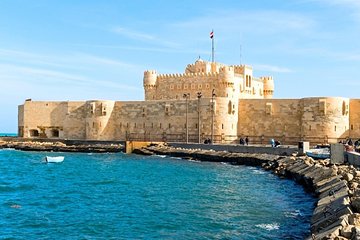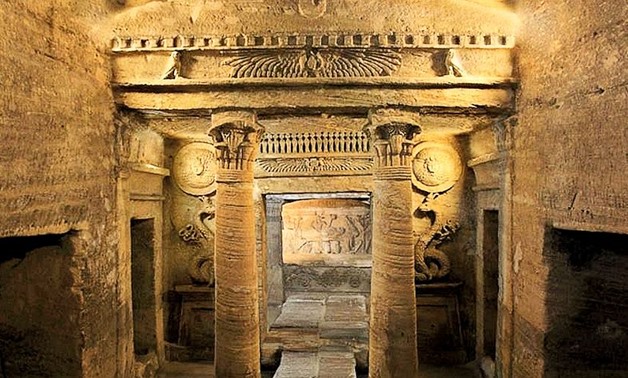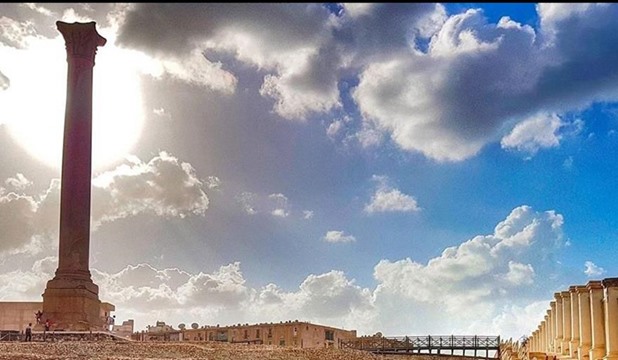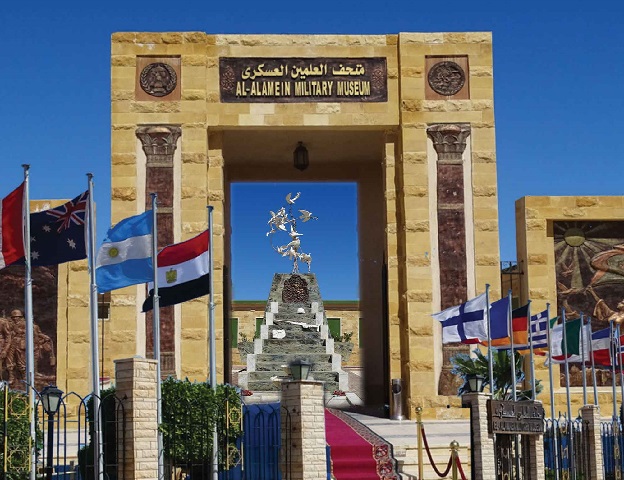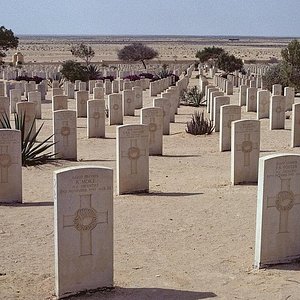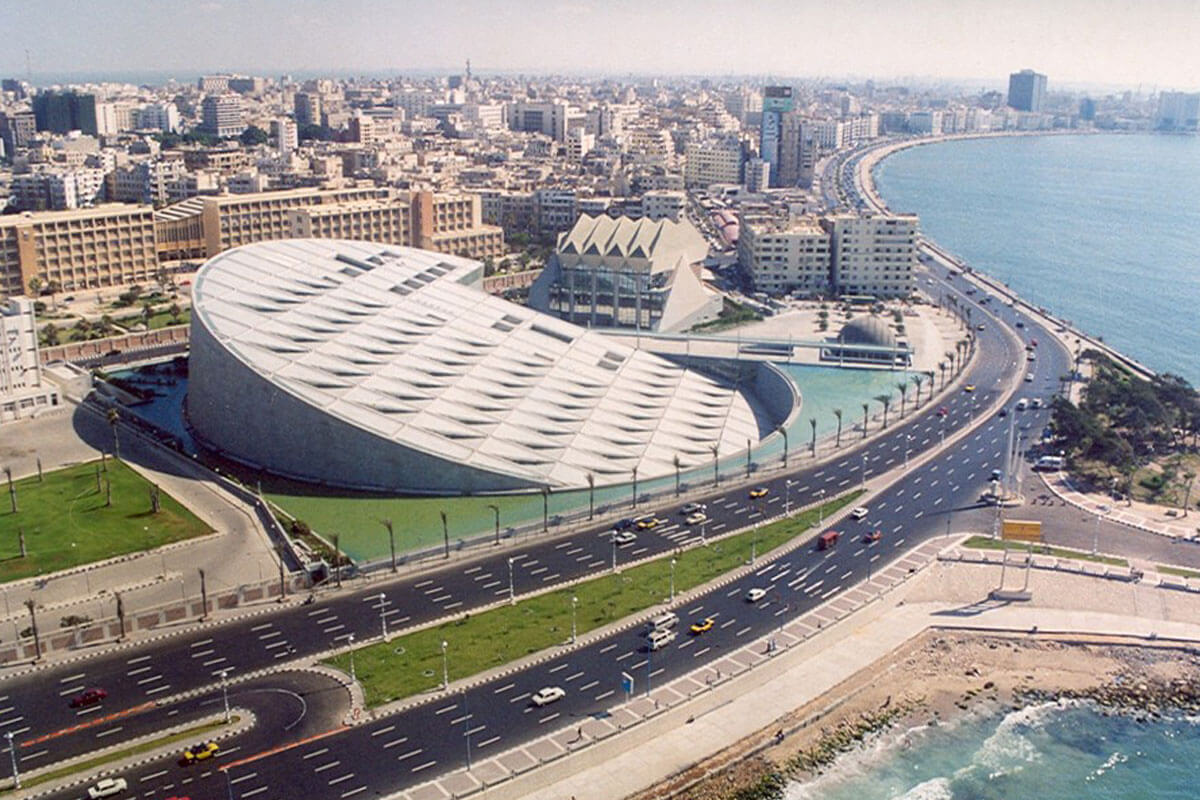
Alexandria & El Alamein
Let's go to Alexandria and El Alamein
Among the greatest cities of the Mediterranean world and a centre of Hellenic scholarship and science, Alexandria was the capital of Egypt from its founding by Alexander the Great in 332 BCE until its surrender to the Arab forces led by ʿAmr ibn al-ʿĀṣ in 642 CE. One of Egypt’s largest cities, Alexandria is also its principal seaport and a major industrial centre. The city lies on the Mediterranean Sea at the western edge of the Nile River delta, about 114 miles (183 km) northwest of Cairo in Lower Egypt.
Alexandria has long occupied a special place in the popular imagination by virtue of its association with Alexander and Cleopatra. Alexandria played an important role in preserving and transmitting Hellenic culture to the wider Mediterranean world.
Qaitbay Citadel, The Catacombs of kom el shoqafa and the Royal Jewellery Museum
Qaitbay CitadelThe Citadel of Qaitbay is a 15th-century defensive fortress in Alexandria, Egypt, built by the Mamluk Sultan Al-Ashraf Qaitbay between 1477 and 1479 AD on the site of the ancient Lighthouse of Alexandria. It served as a key coastal defense against naval attacks, especially from the Ottoman Empire, and incorporated elements of the original lighthouse's ruins in its construction. The fortress was later damaged by the British navy in 1882 and has since been restored and is now a popular tourist site and a symbol of Alexandria's rich history. Opening hours: 09:00- 19:00.
The Catacombs of kom el shoqafa:The Catacombs of Kom el-Shouqafa entombed over 300 mummies. See bearded serpents crowned with the crowns of Upper and lower Egypt, the hovering solar disc above the archway and customary funerary deities joined with Greco-Roman motifs. The catacombs are monumental testament to the enduring myths of Ancient Egypt despite centuries of Greek and Roman rule. Kom el-Shoqqafa means piles of shreds. It was discovered by pure chance in 1900 when a donkey drawn cart fell into a pit. Opening hours: 09:00- 17:00.
Pompey’s PillarPompey Pillar is one of the most famous monuments in Alexandria.It is made of red granite. The column was erected in honor of Emperor Diocletian in the third century AD, and it is the last surviving monument from the Temple of the Serapeum erected by Postumus. The column is considered the highest monument in the world, and the exact date of the establishment of this column has not been determined, but it dates back to the Roman era, and it was said that this column was dedicated to Christianity after its triumph in Alexandria. The name of the column dates back to the Arab era, where it is believed that it came as a result of the height of this towering column among 400 other columns, which is similar to the masts of ships. The Arabs called it "Amoud el-Sawari", Column of the Horsemen. The body of the column is a single piece with a diameter of 2.70 meters at the base and 2.30 meters at the crown. The total height of the column including the base is about 26.85 meters. On the western side of the column there are two bases that can be accessed by an underground ladder. There are also two statues similar to the Sphinx made of pink granite dating back to the era of Ptolemy VI, on one of them an inscription of King Horemheb of the Eighteenth Dynasty. Opening hours 09:00- 17:00.
Royal Jewelry Museum:The Royal Jewelry Museum displays the collectibles of the Egyptian royal family, founded by Muhammad Ali Pasha in 1805 and continued to rule for 150 years, until 1952. Zaynab Fahmi built the palace in 1919 in Zizinya, Alexandria. It served as the residence of Fatma al- Zahra’, daughter of Prince Ali Haider, a descendent of Muhammad Ali Pasha. The palace serves as a striking backdrop to the magnificent possessions owned by the family. It uniquely merges between European and Islamic styles, reflecting the fine taste of the royal family whose paintings, gilded ceilings, and mosaics decorate the palace rooms. The palace consists of two wings, eastern and western, connected by a corridor. Each wing has a basement and two floors.
El Alamein Military Museum and El Alamein Memorial
El-Alamein:The New Alamein City is located on the North Coast and is set to be the first of its kind in the area. It is designed to the high standards of what is called a fourth-generation city. New Alamein City North Coast is planned to hold millions of residents, hitting a new milestone for the area.It comes with the new concept of an open-to-the-public tourism city on the North Coast, taking a different approach than the private resorts spread across the sea line. Aside from its touristic benefits, the New Alamein City also offers an alternative to living in the crowded capital of Cairo, aiming to reduce the residential burden on the shoulders of the city.This new coastal city will include a number of global projects, from business and international trade centers to residential towers and luxurious resorts.
Museum of El Alamein Military:El-Alamein Military Museum was founded on the 16th of December, 1956, when the late president Gamal Abd Elnasser ordered its establishment to commemorate Egypt's fundamental role in one of the most important battles of World War II, El-Alamein battle, which broke out between the allies and the Axis Powers in October 1942. The museum witnessed development, renovation, and maintenance measures and was renewed on the 50th anniversary of El-Alamein battle on the 21st of October, 1992, and later went through other development measures including the set-up of an exhibitory display, to be reopened on the 21st of October, 2014. The Museum aims to document El-Alamein battle by introducing a group of weapons, armors, and models which symbolize El-Alamein battles and the contributing forces, besides a group of battle course-of-action maps, as well as acquisitions of battle commanders.
Alamein Memorial:The ALAMEIN MEMORIAL forms the entrance to Alamein War Cemetery. The Land Forces panels commemorate more than 8,500 soldiers of the Commonwealth who died in the campaigns in Egypt and Libya, and in the operations of the Eighth Army in Tunisia up to 19 February 1943, who have no known grave.
Starting at $1,395 per person
Alexandria, Egypt
Starting at $1,395 per person
Qaitbay Citadel, Alexandria, Egypt
Catacombs-of-Kom-el-Shoqafa, Alexandria, Egypt
Pompey’s Pillar, Alexandria, Egypt
The jewellery museum, Alexandria, Egypt
Elalamein_museum, Elalamein, Egypt
Alamein Memorial, Elalamein, Egypt




